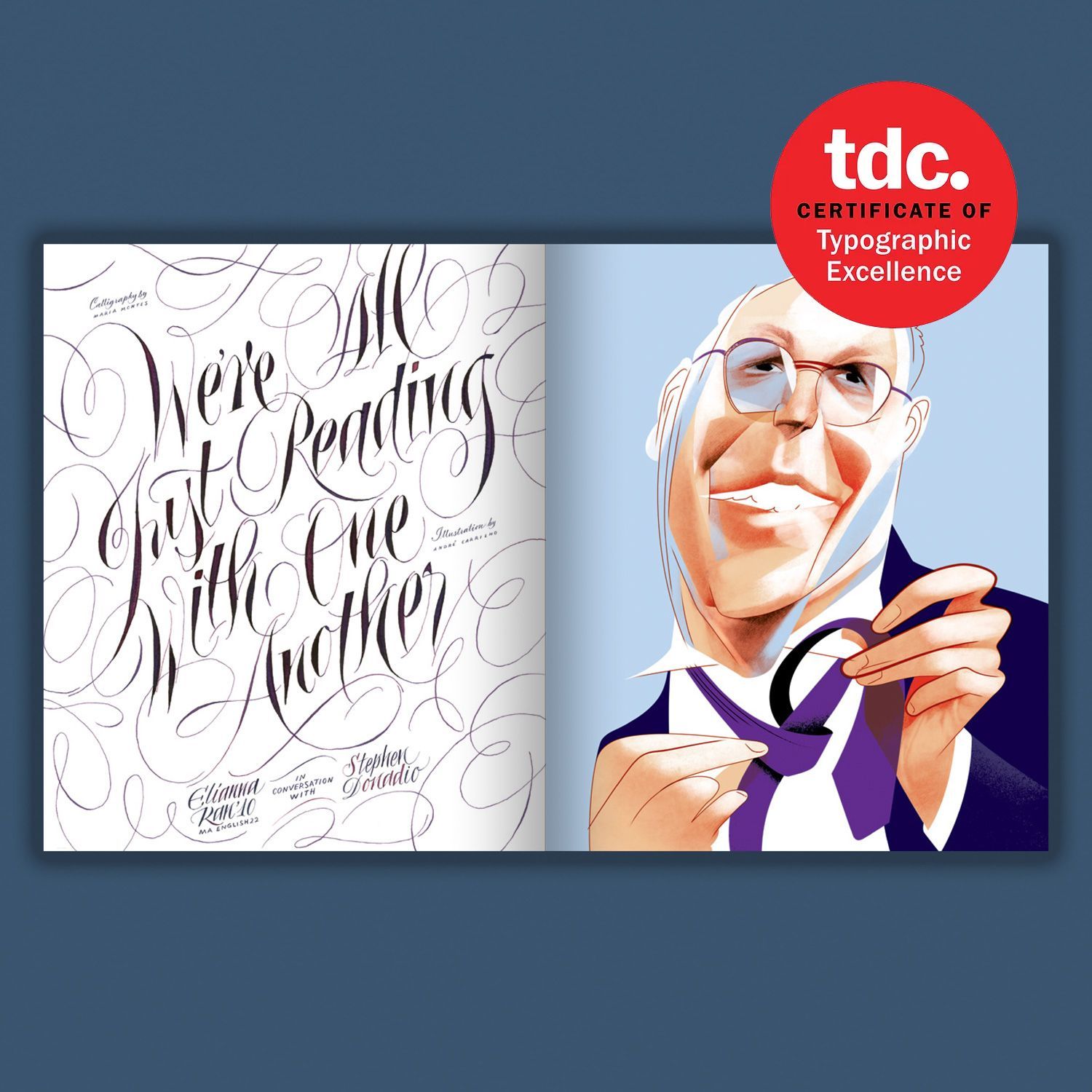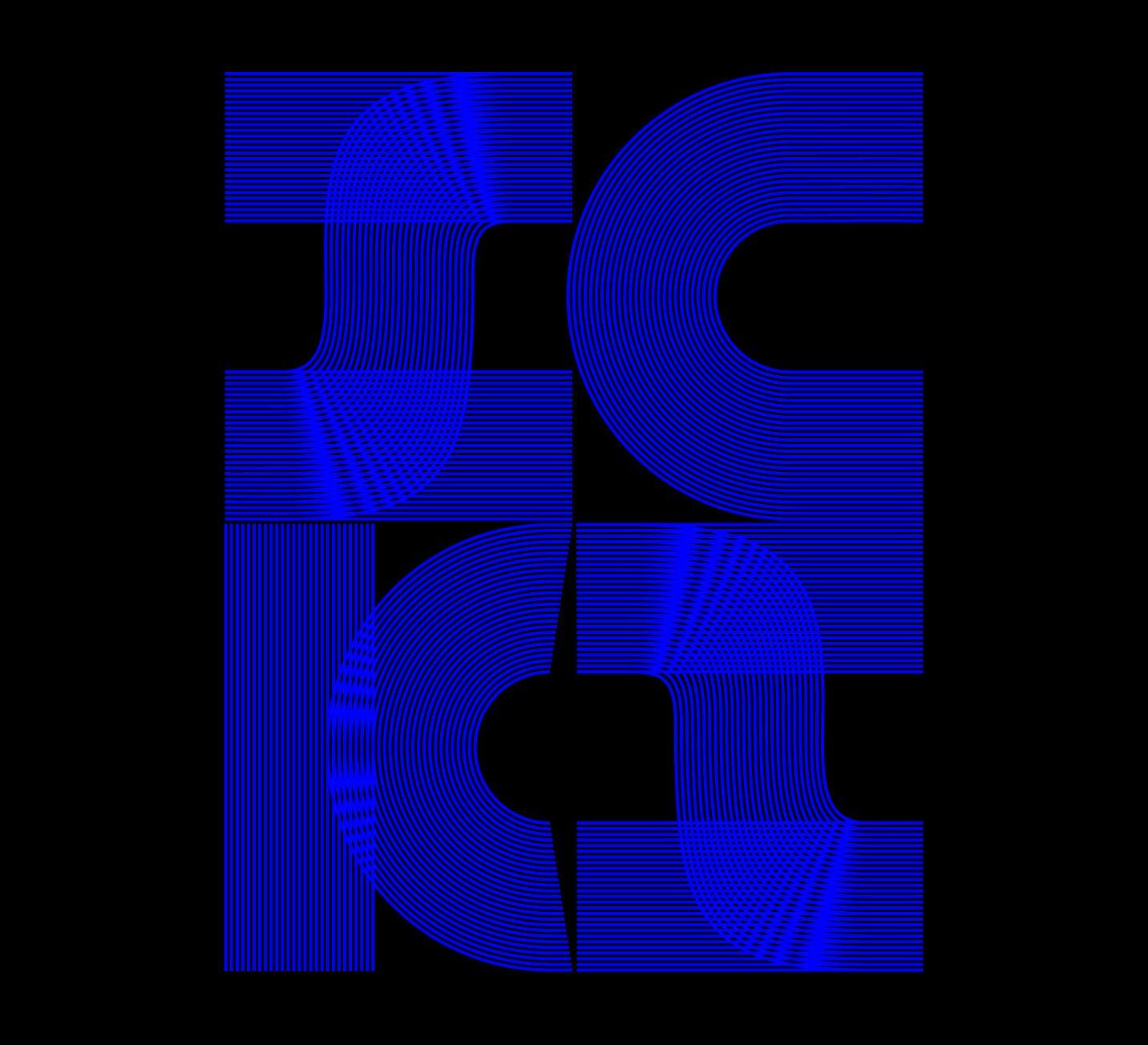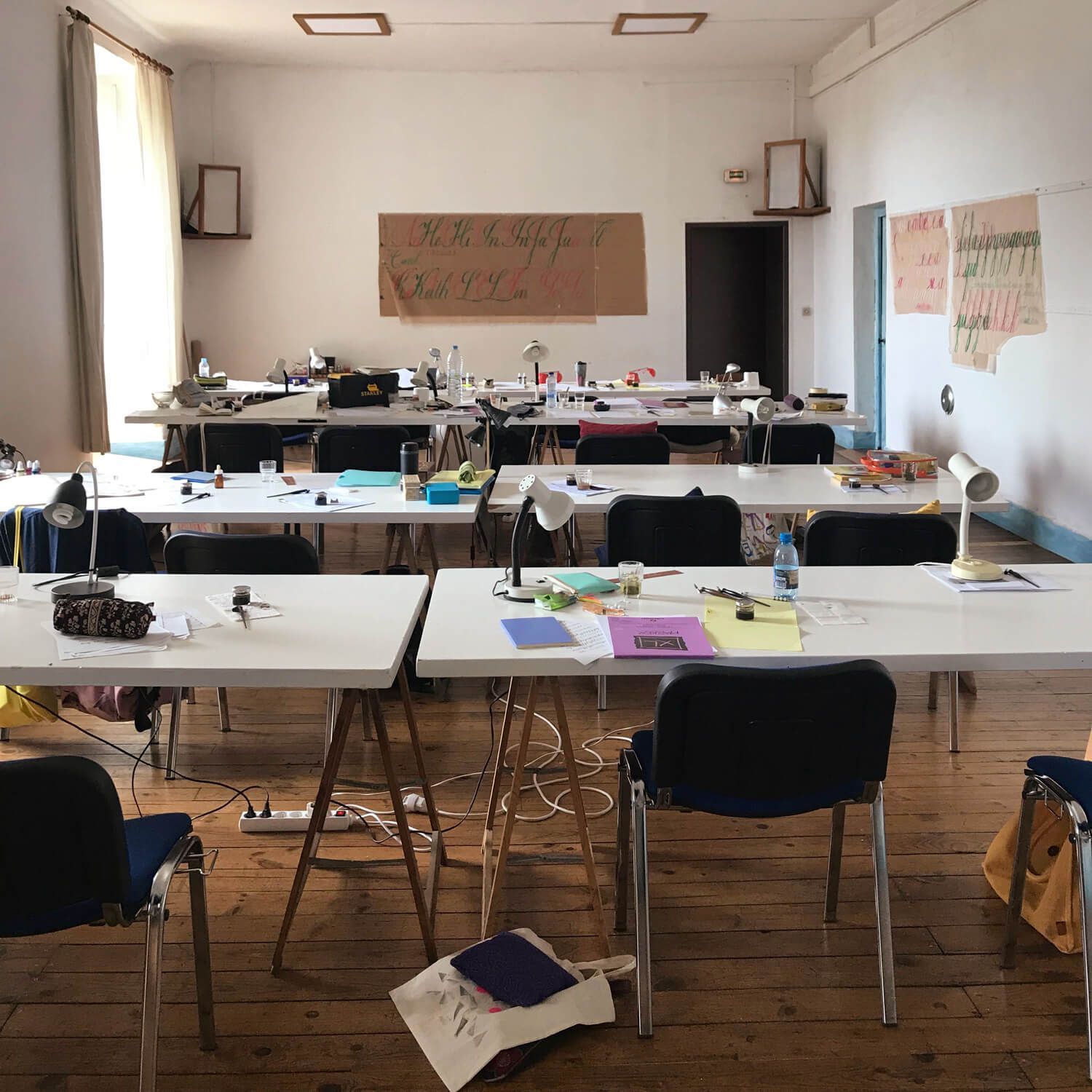Best Calligraphy Inks, Paint & Pigments for Every Need: The Beginner Guide
Choosing the right medium for your calligraphy can make the difference between frustrating practice sessions and beautiful, flowing letterforms. Whether you’re a complete beginner picking up your first nib or an experienced calligrapher exploring new techniques, this guide will help you find the best ink, paint, or pigment for your specific needs.
Unlike basic ink guides that focus only on traditional options, we'll cover everything from classic calligraphy inks to modern paints and metallic pigments—organised by what works best for different nibs, skill levels, and project types.
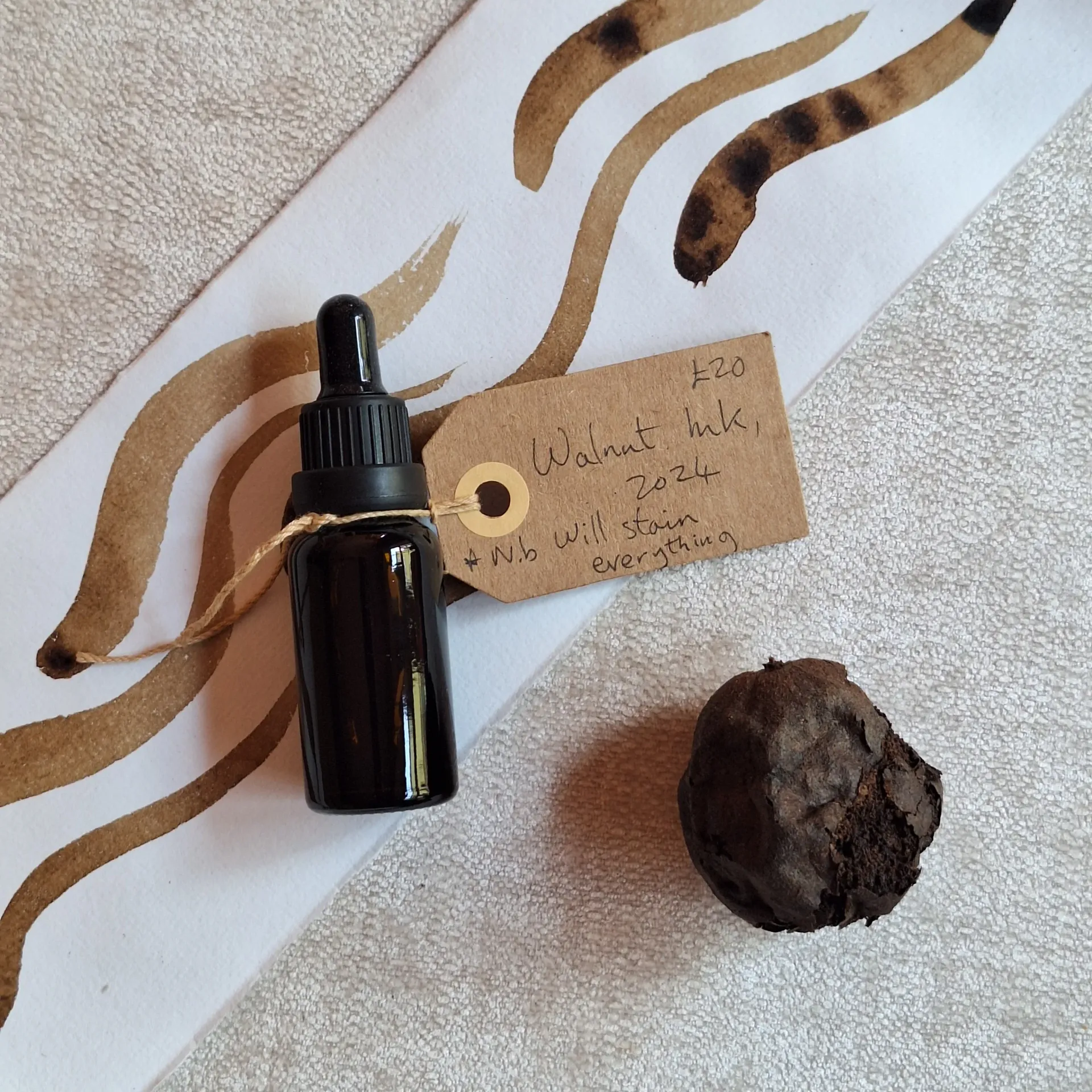
Best Calligraphy Medium for Complete Beginners: Walnut Ink
Why walnut ink is perfect for beginners?
Walnut ink offers the ideal calligraphy learning experience because it's forgiving, slightly translucent (so you can see your stroke mechanics), and flows beautifully without being too thin or thick. The natural brown colour is easy on the eyes during long practice sessions and shows beautiful stroke variation.
Best for: Pointed flexible nibs, square-edged nibs, brush practice
Calligraphy skill level: Beginner to advanced
Preparation: You can buy pre-mixed liquid
walnut ink or make your own from crystals
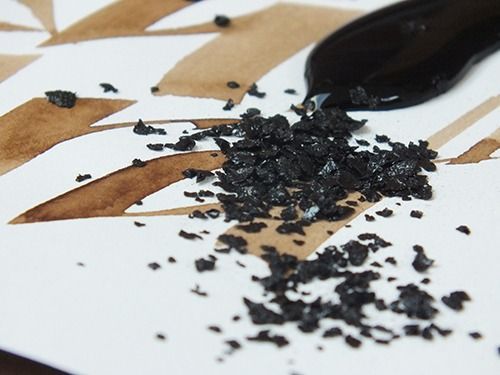
How to Prepare Walnut Ink from Crystals
Making walnut ink from crystals is economical and lets you control the colour intensity:
- Use a small glass jar and add 80ml of water (about one-third of a glass)
- Add two teaspoons of walnut crystals to the water
- Stir with a wooden stick like instant coffee (but don't drink it!)
- The ink should have a coffee-like color
- Too light? Add another teaspoon of crystals. Too dark? Add more water
- Wait until air bubbles disappear from the surface before using
Pro tip: Walnut ink works beautifully with all nib types and is perfect for refilling Pilot Parallel Pen cartridges using a pipette.
Sumi Ink and Japanese Ink Sticks
Ink sticks are a great way of conserving and transporting ink. The ink is obtained by rubbing the ink stick, called ‘Sumi’, upon the surface of a stone vessel called ‘Suzuri’. This way of producing ink is very calming for the mind, giving you the opportunity of slowing down and progressively landing on your calligraphy page. Most ink bars produce a black or dark grey ink colour which is extremely durable. Sometimes the ink bar can be modified to produce brown and blue colours as well.
This video gives a very good overview on the production process of premium Japanese ink sticks geared towards professionals and master calligraphers. Not all ink sticks have these superior quality and you can also purchase affordable ink bars from many art stores.
If you are looking for a ready-to-use sumi ink premix, I use Kuretake Sumi ink which comes in different colours and the result is opaque and wonderful.
- Best for: Brush lettering, flexible pointed nibs, broad-edged nibs, mixed media projects
- Calligraphy skill level: Beginner to advanced
- Loading technique:
Load directly from the bottle with a brush onto your nib, or dip directly if your stone vessel allows.
Best Medium for Watercolour Lovers: Liquid Watercolours
Liquid watercolours (like Talens Ecoline or Vallejo) offer the transparency and blendability of traditional watercolours with the convenience of ready-to-use consistency. They’re perfect when you want to add watercolour washes around your lettering.
- Best for: Brush lettering, flexible pointed nibs, broad-edged nibs, mixed media projects
- Calligraphy skill level: Beginner to advanced
- Unique advantage: Can be mixed to create custom shades and gradients
- Loading technique: Load directly from the bottle with a brush onto your nib, or dip directly if your ink pots allows. Perfect for creating color transitions within single words.
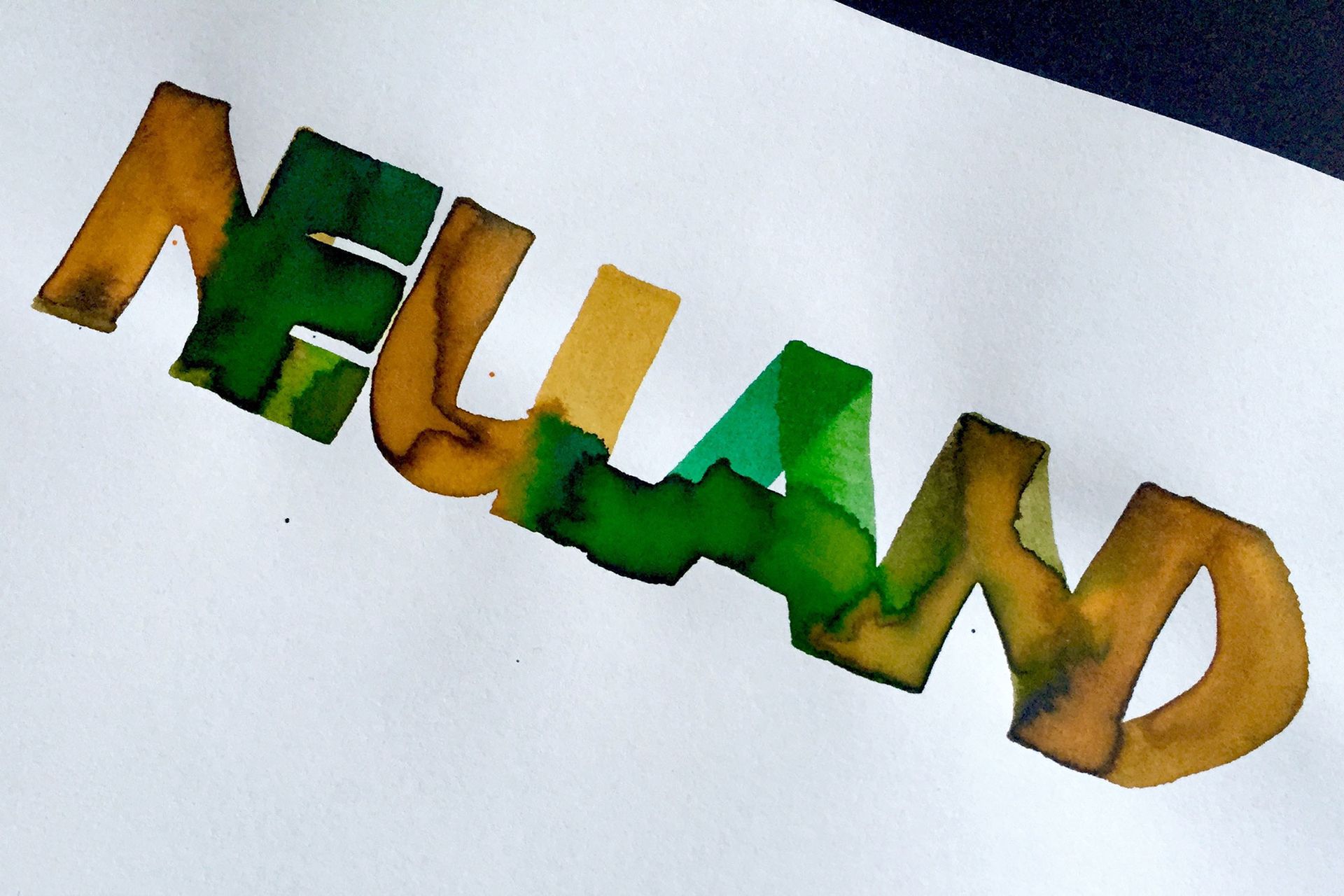
Photo credit: Neuland Calligraphy by Maria Montes
Best Paint for Opaque Results and Dark Paper Surfaces: Gouache
Gouache provides opaque, vibrant coverage that’s perfect for the clean, crisp edges that square-edged and pointed pen calligraphy nibs demand. When mixed to the right consistency, it flows beautifully while maintaining rich colour saturation.
Gouache is your best friend for all these occasions where you are planning to use a black/dark paper for your final piece.
- Best for: Any calligraphy style
- Calligraphy skill level: Beginner to advanced
- Recommended brands: Talens Gouache for daily practice; Winsor & Newton for finished pieces
How to Mix Gouache for Calligraphy
- Start with a small amount of gouache paint
- Add water gradually until you reach light cream consistency
- Mix thoroughly and test on scrap paper
- The mixture should flow smoothly without being too thin
Loading technique: Use a brush to load gouache onto broad-edge nibs. Avoid ink pooling by gently blotting on scrap paper before writing.
Best Metallic Medium: Finetec/Coliro Watercolour Pans
These metallic watercolour pans provide incredible shimmer and opacity while being easy to control. Unlike liquid metallics that can separate, these stay consistent and can be reactivated even after drying.
If you are looking for a solid and opaque finish over a black/dark paper surface, then I would recommend metallic gouache paint.
- Best for: Special occasion pieces, black paper, decorative elements
- Calligraphy skill level: Intermediate to advanced
- Pro tip: Always mix thoroughly and load with a brush onto the back of your nib
- Loading technique: Activate with water, mix well, then brush onto the back of your nib. Works with both pointed and broad-edge nibs.
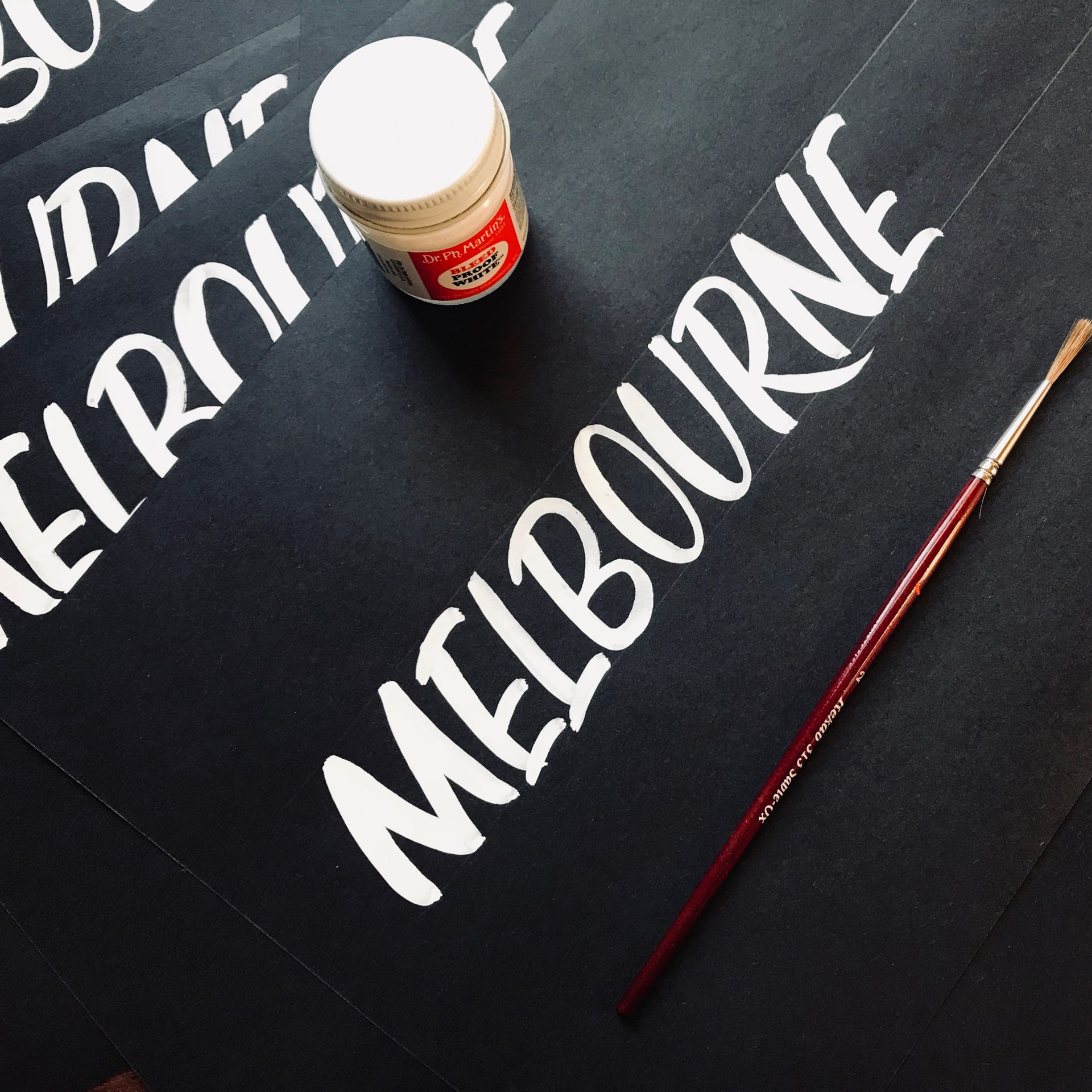
Photo source: Brush calligraphy original using Dr Martin’s Bleedproof White ink by Maria Montes.
Best White Medium: Dr. Ph. Martin’s Bleedproof White
Why it outperforms other whites?
This paint offers exceptional opacity and beautiful consistency on dark surfaces. Unlike many white inks that appear gray or chalky, Bleedproof White maintains true white coverage.
- Best for: Dark paper, black backgrounds, highlighting
- Calligraphy skill level: Intermediate to advanced
- Preparation: Comes thick and needs dilution with water for optimal flow
- Loading technique: Dilute to desired consistency and load with a brush. Allow extra drying time compared to regular inks.
Best Medium for Black Paper Projects
For maximum impact on dark surfaces, you can combine:
- Dr. Ph. Martin’s Bleedproof White for crisp lettering
- Finetec metallics for decorative elements
- Gouache paint for colour variation
This combination provides the opacity and vibrancy needed to make your lettering pop against dark backgrounds.
Best Waterproof Option: Acrylic Ink & Acrylic Paint
Why it’s ideal for permanent work: Acrylic inks dry quickly to a completely waterproof finish, making them perfect for pieces that might encounter moisture or for layering techniques.
For my brush lettering work I use Jo Sonja’s acrylic paint, and the brush soap from the same brand.
- Best for: Brush calligraphy, finished pieces needing permanence
- Calligraphy skill level: Intermediate to advanced
- Important note: Do not use acrylic ink with metal square-edged or pointed nibs as it dries too quickly and can damage the nib
- Loading technique: Works best with brushes and brush pens. Clean tools immediately after use.
What is Iron Gall Ink and why is it exceptional?
Iron gall ink (also known as common ink, standard ink, oak gall ink or iron gall nut ink) is a purple-black or brown-black ink made from iron salts and tannic acids from vegetable sources. It was the standard ink formulation used in Europe for the 1400-year period between the 5th and 19th centuries, remained in widespread use well into the 20th century, and is still sold today.
Iron gall ink has incredible flow properties that glide smoothly across the paper, allowing for the thinnest hairlines and richest downstrokes. This historical ink oxidises over time, meaning your work will develop deeper, more elegant tones as it ages.
- Best for: Pointed flexible nibs and dip pens in general
- Calligraphy skill level: Intermediate to advanced
- Special considerations: Iron gall ink is acidic, so clean your nibs thoroughly after use
- Loading technique: Use a brush to load ink between the nib tines, or dip directly. The excellent flow means you won't need to reload frequently.
Comparing Iron Gall ink and Fountain pen ink on inexpensive paper
This video is showing how iron gall performs on copy and marker paper and under water.
Best Budget-Friendly Option: Fountain Pen Ink + Modifications
While fountain pen ink is typically too thin for dip pens, you can modify it for calligraphy use while keeping costs low.
- Best for: Pilot Parallel Pens
- Calligraphy skill level: Beginner
- Modification: Add a small amount of gum arabic to thicken fountain pen ink for dip pen use.
- Loading technique: Works best with Pilot Parallel Pens in original form, or can be brushed onto nibs when thickened.
Fountain Pen Inks Explained: What Ink Should You Use in a Fountain Pen?
This video all about fountain pen inks, they go over the different ways to use fountain pen inks with your pen whether it's cartridges or ink bottles and converters, explain the differences between dye-based, pigment-based and iron gall inks, and give an overview of some popular ink qualities such as shading, sheening and shimmering. The video contains a demo experimentation with different papers and different nib sizes to determine how to bring out the most shading, sheening and shimmering in your writing.
Video credit: This video by Maria Montes explores the different types of inks used in Copperplate calligraphy.
Nib-Specific Recommendations
Pointed Flexible Nibs
- Best options: Walnut ink, iron gall ink, liquid watercolours, properly diluted gouache
- Loading: Use a brush between tines or dip directly for thinner inks
- Key tip: Clean regularly to maintain smooth flow
Square-Edged Nibs
- Best options: Gouache, watercolour paint, walnut ink
- Loading: Use a brush to load, or dip directly for thinner inks. Avoid dipping thick paints
- Key tip: Blot excess on scrap paper before writing
Brushes and Brush Pens
- Best options: Watercolour, gouache, acrylic ink, liquid watercolours
- Loading: Direct application or palette mixing
- Key tip: Rinse thoroughly between colors, or dip directly between inks to create gradients.
Pilot Parallel Pens
- Best options: Original cartridges, walnut ink (refilled), fountain pen inks
- Loading: Purchase additional ink cartridges, or refill cartridges with pipette, or use as dip pen
- Key tip: Use bleedproof paper to prevent feathering
Calligraphy Ink Pro Tips for Success
- Storage: Keep all mediums in airtight containers away from direct sunlight. Shake or stir pigment-heavy options before use.
- Paper selection: Use bleedproof paper, hot-pressed watercolour paper, laid paper or smooth Bristol board for best results. For daily practice: Canson XL Marker paper for pointed pen work, Torreón laid paper for broad-edge practice.
- Nib preparation: New nibs can have an oily residue. Clean with toothpaste, dish soap, or even your own saliva (which naturally dissolves the oil layer) before first use.
- Color mixing: Experiment with mixing different mediums from the same family (water-based with water-based) to create custom colours.
Final Thoughts
The key to beautiful calligraphy lies not just in technique, but in understanding how your chosen medium behaves with your tools and paper. Start with walnut ink for learning, then experiment with other options as your skills develop. Each medium offers unique properties that can enhance different aspects of your lettering.
- Remember: the best ink, paint, or pigment is the one that helps you create the effect you're envisioning while being enjoyable to work with. Don't be afraid to experiment and find your personal favourites!
Hey! I'm Maria Montes, a Catalan-Australian multilingual, multicultural designer, calligraphy-and-type educator. My creative practice is set by the principles of never stop learning, sharing knowledge and create emotion through my work.
I have been teaching calligraphy independently since 2014. My favourite way of learning is by teaching others. I offer in-person and online calligraphy and lettering courses, corporate in-house workshops, as well as private one-to-one tuitions.

